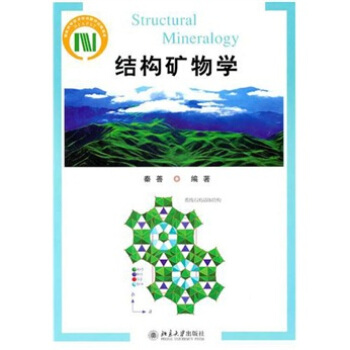![规范理论和现代粒子物理学导论(第2卷) [An Introduction to Gauge Theories and Modern Particle Physics Vol.2]](https://pic.windowsfront.com/10104508/76e5245e-b204-4b62-90f5-798b917fff07.jpg)

具体描述
内容简介
For a book of its genre, our previous book, An introduction to gauge theories and the "new physics" (1982) was a great success. It was not, alas, sold in airport lounges, but it did run to two additional printings (1983, 1985), and to extensively revised editions in Russian (1990), and in Polish (1991). More importantly, it seemed to achieve the principal goal which we had set ourselves, namely, to present a pedagogical account of modern particle physics with a balance of theory and experiment, which would be intelligible and stimulating for both theoretical and experimental graduate students. We did not try to write a profound book on field theory, nor a treatise on sophisticated experimental techniques. But we did wish to stress the deep, intimate and fruitful interaction between theoretical ideas and experimental results. Indeed, for us, it is just this aspect of physics which makes it seem so much more exciting than say pure mathematics.内页插图
目录
PrefaceAcknowledgements
Notational conventions
Note added in proof: the discovery of the top quark (?)
Note added in proof: the demise of the SSC
18 Determination of the Kobayashi-Maskawa matrix
19 Mixing and CP violation
20 Regularization, renormalization and introduction to the renormalization group
21 Gauge theories, QCD and the renormalization group
22 Applications of the QCD renormalization group
23 The parton model in QCD
24 Large Pr phenomena and jets in hadronic reactions
25 Jets and hadrons in e+e- physics
26 Low Pr or soft hadronic physics
27 Some non-perturbative aspects of gauge theories
28 Beyond the standard model
Appendix 1: Elements of field theory
Appendix 2: Feynman rules for QED, QCD and the SM
Appendix 3: Conserved vector currents and their charges
Appendix 4: Operator form of Feynman amplitudes and effective Hamiltonians
Appendix 5: S-matrix, T-matrix and Feynman amplitude
Appendix 6: Consequences of CPT invariance for matrix elements
Appendix 7: Formulae for the basic partonic 2 → 2 processes
Appendix 8: Euclidean space conventions
References
Analytic subject index for vols. 1 and2
前言/序言
For a book of its genre, our previous book, An introduction to gauge theories and the "new physics" (1982) was a great success. It was not, alas, sold in airport lounges, but it did run to two additional printings (1983, 1985), and to extensively revised editions in Russian (1990), and in Polish (1991). More importantly, it seemed to achieve the principal goal which we had set ourselves, namely, to present a pedagogical account of modern particle physics with a balance of theory and experiment, which would be intelligible and stimulating for both theoretical and experimental graduate students. We did not try to write a profound book on field theory, nor a treatise on sophisticated experimental techniques. But we did wish to stress the deep, intimate and fruitful interaction between theoretical ideas and experimental results. Indeed, for us, it is just this aspect of physics which makes it seem so much more exciting than say pure mathematics. Our greatest pleasure came from the favourable reaction of students who were working through the book and from those reviewers who caught what we hoped was its essential fiavour——the writing creates the feeling of an active progression of ideas arising from the repeated interaction of theoretical prejudice with experimental observation, unlike most textbooks, it is highly readable, and makes everything appear simple and obvious. Well, the last comment is surely an exaggeration but that was our aim.In thinking about a second edition we were faced with a serious conceptual problem. Ten years ago we were in a state of excited expectation.A beautiful theory had been created and led, via the simplest of calculations, to absolutely dramatic experimental predictions; principally the existence and basic properties of the heavy vector bosons W+ and Z0.A host of interesting new phenomena could be studied with no more elfort than the calculation of a lowest order Born diagram. Much of the new physics could be discussed and understood from rather qualitative arguments. That idyllic situation is much changed now.
After the few years during which the experimentalists were struggling to demonstrate the very existence of these new phenomena, when the world of physics was electrified by the discovery of one single W or Z event, we have moved into an era when LEP is mass-producing millions of Z0s!
用户评价
这本书的编排风格给我留下了深刻的印象。它似乎是在试图构建一个完整的知识体系,而不是零散地呈现信息。作者在引入一些核心概念时,会回溯到更早期的理论基础,并巧妙地将其与现代规范理论联系起来。这种“承上启下”的教学方式,能够帮助读者更好地理解理论发展的脉络。我非常期待书中对强相互作用的描述,尤其是量子色动力学的渐近自由和夸克禁闭等现象,这些都是理解强子世界的关键。作者是否能够以一种易于理解的方式解释夸克和胶子的相互作用,并且揭示夸克禁闭的深层原因,这将是衡量本书质量的重要标准。同时,如果书中能对畴壁、瞬子等拓扑概念在规范场论中的应用进行探讨,那将大大拓展我们对物理世界更深层次理解的视野。
评分坦白说,这本书的学术密度相当大。它不是那种可以随意翻阅的书籍,而是需要沉下心来,逐字逐句地品味。作者在处理数学细节时,一丝不苟,力求精确。这对于那些希望深入理解规范理论数学结构的学习者来说,无疑是一大福音。我迫切希望书中在讲解费曼图和重整化技术时,能够提供一些清晰的推导步骤和物理意义的解释。这是量子场论计算中不可或缺的工具,掌握它们是进行实际物理计算的基础。如果书中还能对标准模型的参数、耦合常数以及它们之间的关系进行深入分析,并且探讨如何利用实验数据来确定这些参数,那将是一次极具启发性的学习体验。我对书中可能涉及到的非微扰效应和对偶性等前沿研究方向也抱有浓厚的兴趣,希望作者能够为我们打开一扇通往更广阔理论世界的大门。
评分我是一名对粒子物理充满热情,但基础相对薄弱的学习者。当我拿到这本书时,我曾有些许畏惧,担心其晦涩难懂。然而,实际翻阅后,我的疑虑被打消了许多。作者在开篇就为我们描绘了一个宏大的理论图景,并逐步引导我们进入规范理论的世界。这种“由表及里”的叙述方式,对于非专业背景的读者来说,无疑是一种福音。书中关于洛伦兹对称性、规范不变性等基本概念的介绍,虽然简练,却点出了问题的核心。我特别期待书中在讲述量子电动力学(QED)时,能够更详细地解析其背后的物理图像,例如光子的相互作用以及电荷的传递过程。虽然QED是标准模型中最基础的部分,但其理论框架却为后续更复杂的理论奠定了基础。此外,如果书中能就卡比博-小林-益川(CKM)矩阵在弱相互作用中的作用进行深入讨论,并解释其为何会导致CP破坏,那将是对我理解粒子物理不对称现象的重要启示。
评分这本书给我的第一印象是其知识的深度和广度。它不像市面上一些浅显的科普读物,而是直接深入到理论的核心。作者显然是一位在粒子物理学领域浸淫多年的专家,他对理论的理解已经达到了一种炉火纯青的地步。在阅读过程中,我能感受到作者试图将自己对物理世界独特而深刻的理解传递给读者,这种尝试本身就极具价值。书中关于对称性在粒子物理学中的作用的论述,令我耳目一新。对称性原理作为指导我们理解基本粒子相互作用的有力工具,其重要性不言而喻。我尤其欣赏作者在解释对称破缺机制时的细腻笔触,这部分内容往往是理解粒子质量来源的关键,也是理论中最为精妙的部分之一。希望书中能对自发对称破缺和希格斯机制有更详尽的阐述,并且能够清晰地展现它们在构建标准模型中的核心地位。此外,对于规范场的量子化处理,我期待作者能提供一些清晰的思路和方法,毕竟这是理解量子场论的关键难点之一,能够顺利跨过这一关,对后续的学习将有极大的帮助。
评分一本厚重的书,封面设计简洁大方,传递出严谨的学术气息。翻开目录,便能感受到作者对理论体系构建的精心安排。第一卷的铺垫显然是为了在本卷中进行更深入的探索,从引言部分就能窥见其野心勃勃的宏图。作者并非简单地堆砌概念,而是力图展现规范理论作为现代粒子物理学基石的独特魅力。字里行间透着一种循循善诱的教学风格,即使是对于初次接触该领域的读者,也能在作者的引导下,逐步建立起对复杂理论的直观认识。尤其是在对某些关键概念的引入上,作者运用了大量的类比和图示,使得抽象的数学语言变得生动形象。我特别期待书中关于量子色动力学(QCD)和弱相互作用的部分,它们是标准模型中至关重要的组成部分,理解它们的精髓对于把握现代粒子物理学的脉络至关重要。作者在处理这些内容时,是否能够兼顾理论的严谨性和物理图像的清晰性,将是衡量本书成功与否的关键。我对书中可能涉及到的实验验证和观测证据也充满好奇,毕竟理论的生命力在于其能否被实验所证实,而将理论与实验紧密结合,是推动科学进步的根本动力。
评分评价很高的一本书,买了一个套
评分发评价拿京豆换优惠券
评分京东300减100活动相当给力
评分很好。。。。。。。。。。。。。。。。。。。。。
评分书很好,印刷清晰纸质不错
评分专业书籍,帮师兄买的,应该很好!学霸的书柜书!
评分hao, a very good book for me
评分专业书籍,帮师兄买的,应该很好!学霸的书柜书!
评分hao, a very good book for me
相关图书
本站所有内容均为互联网搜索引擎提供的公开搜索信息,本站不存储任何数据与内容,任何内容与数据均与本站无关,如有需要请联系相关搜索引擎包括但不限于百度,google,bing,sogou 等
© 2025 book.coffeedeals.club All Rights Reserved. 静流书站 版权所有

![有界解析函数(修订版)(英文版) [Bounded Analytic Functions] pdf epub mobi 电子书 下载](https://pic.windowsfront.com/10104518/e95b46c9-9714-4ded-b7d5-388fe66e86f7.jpg)







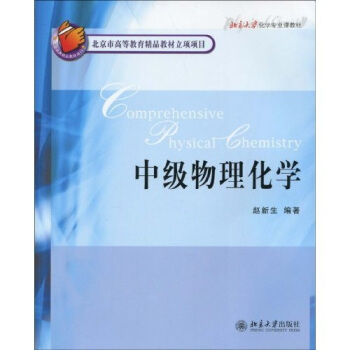


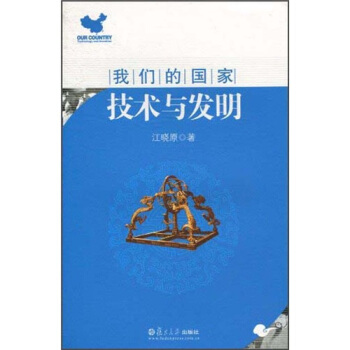
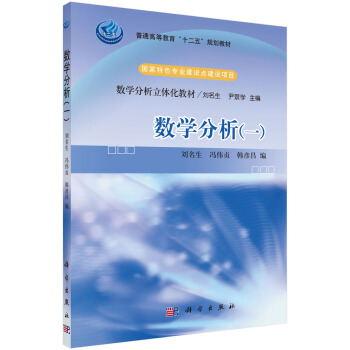
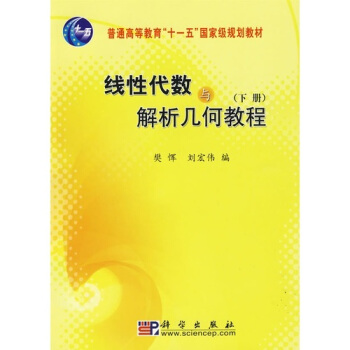

![英语关键力:关键词汇篇 [Thats What They Say:The Categories of Words] pdf epub mobi 电子书 下载](https://pic.windowsfront.com/10320885/75245ea2-ab82-4510-9d37-0e282bb2d43f.jpg)
![进化论传奇 [The Theory of Evolution What it is,Where it Came from,and Why it Works] pdf epub mobi 电子书 下载](https://pic.windowsfront.com/10365149/da1ade37-bfac-4c78-b63a-d5202fd81591.jpg)


